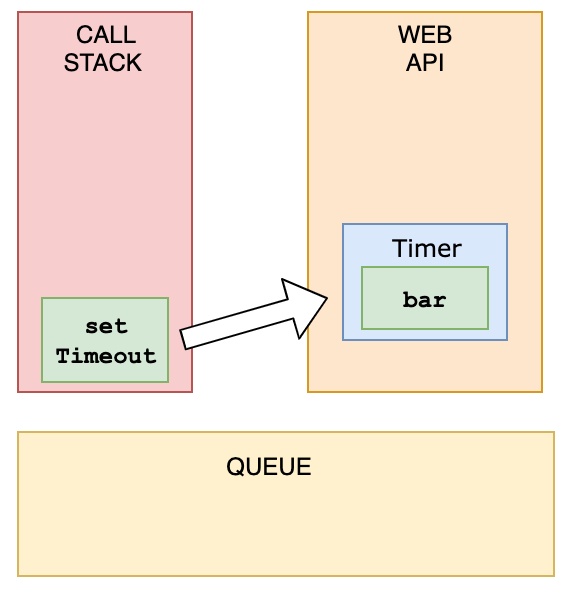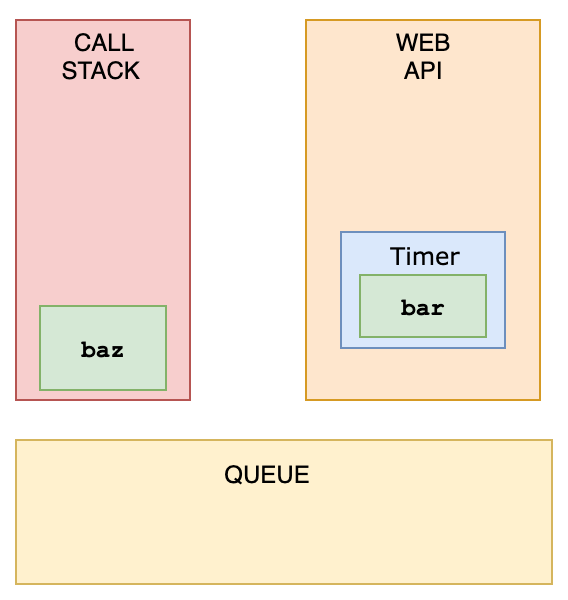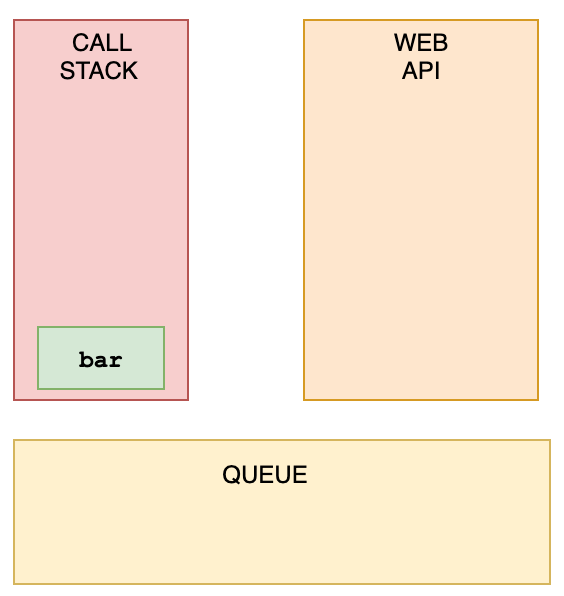Answer: B
We have a setTimeout function and invoked it first. Yet, it was logged last.
This is because in browsers, we don't just have the runtime engine, we also have something called a WebAPI. The WebAPI gives us the setTimeout function to start with, and for example the DOM.
After the callback is pushed to the WebAPI, the setTimeout function itself (but not the callback!) is popped off the stack.

Now, foo gets invoked, and "First" is being logged.

foo is popped off the stack, and baz gets invoked. "Third" gets logged.

The WebAPI can't just add stuff to the stack whenever it's ready. Instead, it pushes the callback function to something called the queue.

This is where an event loop starts to work. An event loop looks at the stack and task queue. If the stack is empty, it takes the first thing on the queue and pushes it onto the stack.

bar gets invoked, "Second" gets logged, and it's popped off the stack.